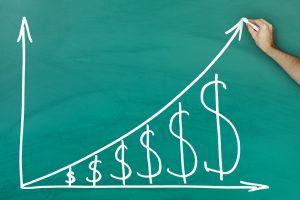 Back to the news
Back to the news
Everything You Need to Know About Input Tax Credits
Brian Jang ON February 22, 2019Have questions about Input Tax Credits (ITCs)? If you are not sure what they are, or what qualifies and what doesn’t, keep reading.
Input Tax Credits are the total of all GST/ HST that you paid on legitimate tax expenses, or the allowable portion of the amount paid. Canada Revenue Agency documents often refer to them as ITCs, and they are a means to recoup the GST/ HST paid on purchases and expenses related to your business activities.
In order to make use of ITCs, you must be registered for the GST/ HST and you must keep track of the GST/ HST paid on eligible purchases and expenses but recording it separately in your bookkeeping/ accounting system. As always in situations like this, you will need to hang on to all relevant receipts in case you need to demonstrate their validity.
Items that Qualify as Input Tax Credit
Here are some of the expenses that you can use to claim Input Tax Credits, according to the CRA website:
- Equipment rental
- Home off, or motor vehicle expenses
- Office expenses (computers, stationery, etc.)
- Rent
- Travel expenses (airfare, car rental, and hotel)
- Accounting fees, legal fees, or other professional fees
- Advertising-related expenses (ads, flyers, business cards, etc.)
There are also capital expenses that qualify, such as:
- Capital property
- Improvements to capital property
- Furniture and appliances
- Machinery, vehicles
This is only a partial list. For the full list, please refer to the CRA website.
Items That Do Not Qualify
Items that come immediately to mind are those that were purchased for personal use and enjoyment. Some other purchases and expenses that do not qualify include:
- Some capital property
- Taxable goods and services bought to provide exempt goods and services
- Membership fees and dues for any club that is dedicated to recreation, dining, or fitness/sports Exception: if the membership is purchased to resell as part of your business
How to Fill in Your GST/ HST Return
When completing your GST/ HST Return for Registrants covering a particular reporting period, the following should be entered:
- Line 103: This is the total amount of GST/ HST collected by you, or owed to you for the period (from invoices, customers, etc.).
- Line 104: The total amount of adjustments to ad to the net tax for the period. One example might be GST/ HST collected on the recovery of a bad debt.
- Line 105: Enter the total of lines 103 and 104.
- Line 106: This is the sum of the GST/ HST (ITCs) that you paid out on qualifying purchases and expenses, such as anything unclaimed from a previous period.
- Line 107: Enter the amount of all adjustments to deduct when determining your net tax for the period. An example of this might be GST/ HST included in a bad debt.
- Line 108: The total of 106 and 107.
- Line 109: Enter the result of subtracting line 108 from If negative, check the box.
- Line 110: Enter the amount of any instalment or other payments made during the period.
- Line 111: Enter the total amount of all GST/ HST rebates, but only if the rebate form indicates that you may do so. Be sure to attach the form to this return.
- Line 112: Enter the sum of lines 110 and 111 on this line.
- Line 113a: This is the amount obtained when subtracting line 112 from line 109.
- Line 205: Enter the amount of GST/ HST due on the acquisition of taxable real property.
- Line 405: Enter the total amount of GST/ HST to be self-assessed. This means, for example, that if you purchase from a province with a lower HST, or even no HST, you must add the difference in HST for your province of business.
- Line 113B: The sum of lines 205 and 405.
- Line 113C: The sum of lines 113A and 113B. If the result is negative, check the box.
The amount on line 113C is your GST/ HST net tax. A positive amount indicates a payment to be made by you, while a negative indicates a refund.
Always keep in mind that Input Tax Credits are for claims made in relation to your business, and your purchases and expenses must be considered reasonable, in terms of quality, nature, and cost.








